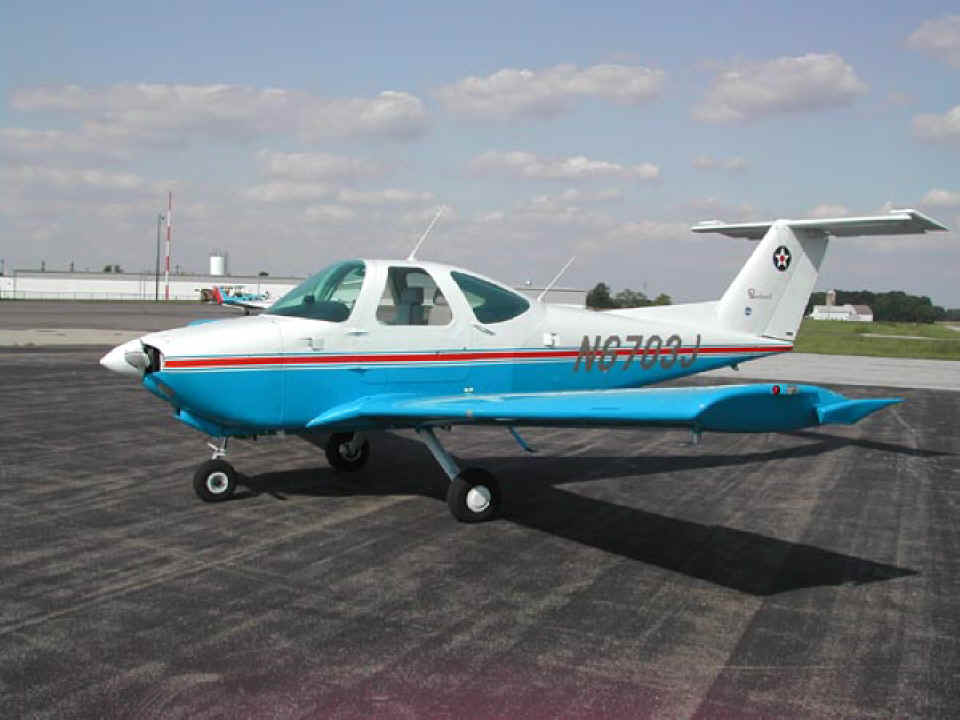FIREWALL FORWARD - Page 69.
November 25, 2004: The first FIVE pictures
on this page were taken during the first work session today. The brakes are ready to
fill with brake fluid, but not today. This picture of the RIGHT main landing gear is
looking AFT. The brake line is on the front of the gear leg.
This close-up shot of the flaring tool shows the BEFORE condition of the
1/4" aluminum tubing used for the brake lines.
And here is the AFTER shot of that same brake line
showing the flared end of the aluminum tubing.
The final result of the flare on the LEFT brake line and the
same tool that I used
to do it.
And here it is installed on the LEFT main landing gear. This is the same
way the tubing is curved on the other main landing gear shown at the top of the
page. There is a 1/4" plastic tube that has been split and placed around the
aluminum tubing in three places on each gear leg. The plastic tubing and the
aluminum tube within are both held in place with black electrical tape just as Van's plans
has instructed that it be done.
The other thing I did on the airplane project this evening was to fabricate and
install this aluminum panel between the firewall and the bulkhead behind the main
instrument panel. I used a pair of 3/4" x 3/4" x 0.063" aluminum
angles to support the panel. The flat aluminum panel is screwed to the angles and
the bulkhead allowing the panel to be removed for easier access when it is time to rivet
on the forward top skin of the fuselage. That black box with the white label on it
is the altitude encoder. Look at the picture below this one for more details.
Looking up behind the instrument panel from the pilot seat bottom area shows
everything mounted to the new panel. The solid state ignition control module is the
black box with the RED label on the left. The front side of the altitude encoder is
mounted further away from the camera on the blank "shiny" aluminum panel and the
reflection of the encoder shows in the mirror surface of the aluminum panel. Those
two BNC connectors on the ignition control module are at a point where the cables that
connect to them will pass in front of the altitude encoder. That clear plastic line
on the encoder will connect to the static port when the installation is completed.
There is a manifold pressure port (not shown) on the LEFT side of the ignition control
module that needs to be connected soon.
The gray bar with the word LEFT written on it is one the rudder bars. The
two white nylon lines are brake lines between the LEFT and RIGHT master cylinders.
The two big BLACK "fuzzy" hoses are the flexible brake lines from the rudder
pedals to the brake line connections on the firewall. That big corrugated BLACK
conduit running from LEFT to RIGHT is the main electrical conduit from the pilot's switch
panel to the entry port on the firewall near the battery and the solenoids. The two
BEIGE cables will be connected to the BNC connectors when I have finished the connections
to the ignition control module.
This was Thanksgiving Day, 2004. I worked on
the airplane in two shifts today. I had a call from Maurice Garner in the afternoon
to go flying with him in a Beechcraft "Skipper" model 77. It is equivalent
to a Piper Tomahawk, but built by Beech Aircraft as a trainer airplane. Not much
power, (Lycoming 0-235) but it flies (not too fast either). It was fun since it was
my first flight in anything NOT made by Cessna where I got to be PIC in the left
seat. The stalls were definite and easily recovered with almost no loss of
altitude. Just like the Tomahawk, the airplane yaws in turbulence. The landing
is predictable. No, I did not get any pictures of the particular airplane we flew
today, but it looks similar to this one I found on the web.

I did get these shots from the cockpit right seat as we left Crossville, TN
heading back toward Chattanooga after dark. I put the digital camera up against the
windshield to minimize the flash bouncing back into the lens. That white dot in the
top center is the FULL MOON as we sat in takeoff position on runway 8 at Crossville.
The "haze" in the upper half of the photo is the remaining flash
reflection from the windshield.
This shot is after takeoff with the FLASH turned OFF and it shows in the slow
shutter speed smears of the street lights and the moon.
I turned the flash back on for this panel shot of the Skipper as seen from the
right seat. Maurice is flying at 70 knots on the initial climb at 500 feet per
minute. The field elevation at KCSV is 1880 feet MSL. The altimeter shows 2560
feet as we climb out of the pattern at the East end of the field.
| CLICK HERE for Firewall Forward Page 70. | RETURN to MAIN MENU |